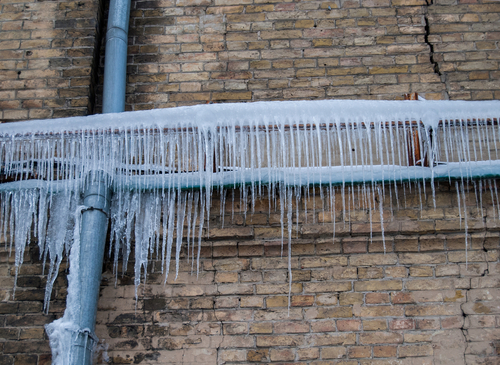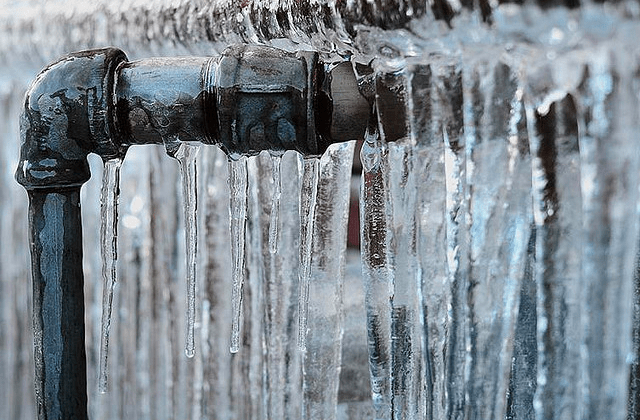Avoid Frozen Pipes in Winter: Pro Tips
Avoid Frozen Pipes in Winter: Pro Tips
Blog Article
How do you actually feel about How to prepare your home plumbing for winter weather?

Winter can damage your plumbing, particularly by freezing pipelines. Right here's exactly how to prevent it from occurring and what to do if it does.
Intro
As temperature levels decline, the risk of icy pipelines boosts, potentially bring about costly repairs and water damages. Understanding exactly how to stop icy pipes is vital for property owners in chilly environments.
Understanding Icy Pipelines
What causes pipelines to ice up?
Pipelines freeze when subjected to temperature levels below 32 ° F (0 ° C) for expanded periods. As water inside the pipes freezes, it increases, putting pressure on the pipeline wall surfaces and potentially creating them to break.
Threats and problems
Frozen pipes can result in water interruptions, residential or commercial property damage, and pricey fixings. Ruptured pipelines can flood homes and trigger comprehensive structural damages.
Signs of Frozen Pipes
Identifying frozen pipelines early can avoid them from breaking.
Exactly how to identify icy pipes
Seek decreased water circulation from taps, uncommon smells or sounds from pipelines, and visible frost on revealed pipes.
Avoidance Tips
Insulating susceptible pipelines
Cover pipes in insulation sleeves or utilize warmth tape to safeguard them from freezing temperature levels. Focus on pipelines in unheated or external locations of the home.
Home heating techniques
Keep interior spaces properly warmed, especially locations with pipes. Open cupboard doors to enable warm air to circulate around pipelines under sinks.
Securing Exterior Plumbing
Garden hose pipes and outdoor faucets
Detach and drain garden hoses before winter season. Mount frost-proof spigots or cover exterior taps with insulated caps.
What to Do If Your Pipes Freeze
Immediate actions to take
If you think icy pipelines, keep faucets available to relieve pressure as the ice thaws. Make use of a hairdryer or towels soaked in warm water to thaw pipelines slowly.
Long-Term Solutions
Architectural changes
Take into consideration rerouting pipelines away from outside wall surfaces or unheated locations. Add added insulation to attics, cellars, and crawl spaces.
Updating insulation
Buy high-quality insulation for pipelines, attics, and wall surfaces. Proper insulation helps keep regular temperature levels and decreases the threat of frozen pipes.
Conclusion
Preventing icy pipelines requires positive actions and fast actions. By understanding the causes, indications, and preventive measures, property owners can secure their plumbing during winter.
6 Proven Ways to Prevent Frozen Pipes and Protect Your Home
Disconnect and Drain Garden Hoses
Before winter arrives, start by disconnecting your garden hoses and draining any remaining water. Close the shut-off valves that supply outdoor hose bibs and leave the outdoor faucet open to allow any residual water to drain. For extra protection, consider using faucet covers throughout the colder months. It’s also important to drain water from any sprinkler supply lines following the manufacturer’s directions.
Insulate Exposed Pipes
Insulating your pipes is an effective way to prevent freezing. Pipe insulation is readily available at home improvement stores and is relatively inexpensive. Pay close attention to pipes in unheated areas such as the attic, basement, crawl spaces, or garage. Apply foam insulation generously to create a buffer against the cold. You can also wrap your pipes in heat tape or thermostat-controlled heat cables for added warmth.
Seal Air Leaks
Inspect your home for any cracks or openings that could let in cold air. Seal any holes around the piping in interior or exterior walls, as well as the sill plates where your home rests on its foundation. Additionally, make sure to keep your garage door closed unless you’re entering or exiting. Leaving it open creates a significant air leak that can lead to frozen pipes.
Allow Warm Air Circulation
During cold snaps, it’s essential to allow warm air to circulate evenly throughout your home. Leave interior doors ajar to promote better airflow. Open kitchen and bathroom cabinets to help distribute heat consistently around the rooms. If you have small children or pets, be sure to remove any household chemicals or potentially harmful cleaners from open cabinets for safety.
Let Faucets Drip
A small trickle of water can make a big difference in preventing ice formation inside your pipes. When temperatures drop significantly, start a drip of water from all faucets served by exposed pipes. This continuous flow helps prevent the water from freezing. Additionally, running a few faucets slightly can relieve pressure inside the pipes, reducing the chances of a rupture if the water inside does freeze.
https://choateshvac.com/6-proven-ways-to-prevent-frozen-pipes-and-protect-your-home/

I stumbled upon that piece of writing about How to prepare your home plumbing for winter weather when surfing around the internet. Sharing is good. Helping people is fun. Thank you for taking the time to read it.
Call Today Report this page